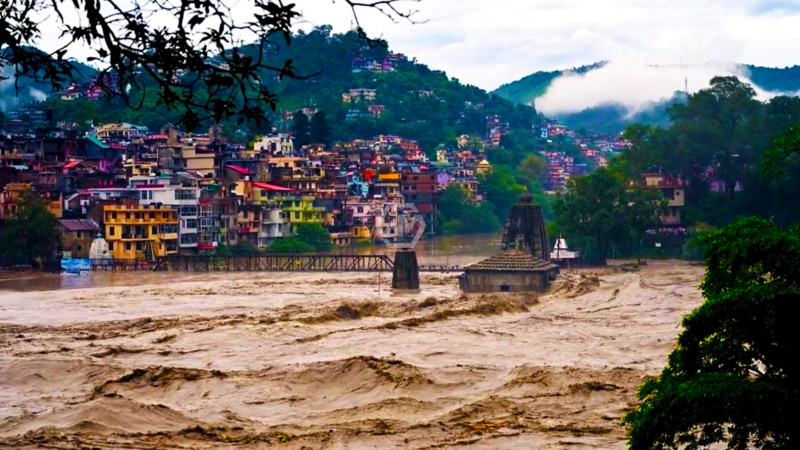Shimla, the capital of Himachal Pradesh, is currently experiencing a water shortage after several days of torrential rain damaged water supply infrastructure and caused silt to build up in water sources.
Water availability decreased to less than a third as a result, and authorities predicted that it would take three to four days for things to return to normal.
Water shortage
Currently, Himachal is experiencing massive rains that have damaged the state extensively. Over 15 people have been killed throughout the state, bridges have been destroyed by surging rivers, and highways and railway tracks have been damaged.
Shimla Jal Prabandhan Nigam Limited (SJPNL) representatives told PTI that on Monday, the city received 11.03 mld (million liters per day), compared to the usual of 42–45 mld. The water supply will not return to normal for three to four days, they added, because floods had interfered with supply operations.
- Shimla faces drinking water shortage due to rain damage and silt buildup.
- SJPNL reports 11.03 mld daily water supply, disrupted by floods.
- Himachal experiences 69% more rain than usual.
Shimla receives water from six streams: Gumma, Giri, Churot, Seog, Chairh, and Koti Brandi. According to PTI, Gumma provided 7.82 mld of water, while supplies from the other five sources totaled 3.21 mld.
Himachal has received 69% more rain than usual this month. In contrast to the typical rainfall of 160.6 mm, the state received 271.5 mm of rain during the monsoon season from July 1 to July 9.
The Chaba pumping station has been damaged, according to officials speaking to PTI. Nautikhad has also been inundated, and only one pump is operating at the Gumma station.
Although the turbidity in Giri has decreased from 9,700 to 7,400 Nephelometric Turbidity Units (NTU), there is no system in place to handle turbidity levels beyond 2,000 to 25,000 NTU, they claimed, adding that the downpour also caused damage to several transmitting pipes.
Sahil Sharma, a spokesman for SJPNL, asked Shimla people to use water wisely and to collect rainwater for non-drinking uses. He also suggested that they consume water from storage tanks.



